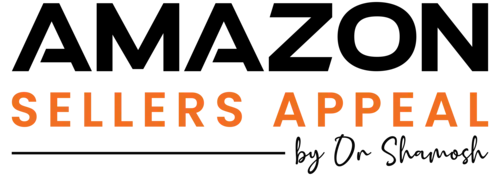The First Sale Doctrine on Amazon: What It Means for Brands and Sellers Alike
The First Sale Doctrine on Amazon: What It Means for Brands and Sellers Alike
If you’re dealing with unauthorized sellers hijacking your listings – or you’re a seller suddenly suspended for “inauthentic” inventory – there’s one principle at the core of it all: the First Sale Doctrine.
It’s one of the most misunderstood pieces of law in the Amazon ecosystem. And depending on which side you’re on, it either feels like a loophole abuser’s best friend or a policy lifeline that just saved your business.
In this guide, we break it down clearly – so whether you’re enforcing or defending, you know exactly how to move forward.
What Is the First Sale Doctrine?
The First Sale Doctrine is a legal rule under U.S. law that says: once a product is sold by the rights holder or with their permission, the buyer has the right to resell it – no further permission required.
On Amazon, that means:
- If a seller legally buys your product – from a distributor, wholesaler, or even a retail store – they have the legal right to resell it.
- They don’t need to be “authorized” by the brand.
- Amazon supports this, as long as the product is authentic, new, and matches the listing.
It’s codified in 17 U.S.C. §109 and backed by a long line of case law. Amazon doesn’t just allow it – their entire third-party marketplace model relies on it.
For Brands: Why Amazon Doesn’t Block Unauthorized Sellers
If you’re a brand owner trying to stop rogue resellers, Amazon’s position can feel incredibly frustrating.
Here’s what Amazon cares about:
- Was the product acquired legally?
- Is it authentic and safe?
- Does it match the listing?
If the answer is yes, Amazon won’t remove it – even if it violates your B2B contracts or sales policy.
Your internal “no Amazon” clause doesn’t apply on Amazon. Unless you get a court order proving contract breach and harm, Amazon won’t act.
When First Sale Doesn’t Protect a Seller
The protection vanishes when:
- The product is materially different (missing warranty, no branded packaging, altered instructions, etc.)
- The product is expired, repackaged, or damaged
- The listing is deceptive or mismatched
These are the angles Amazon will enforce. Brands that win enforcement cases usually focus on proving these kinds of differences – not just unauthorized sales.
What Can Brands Do to Regain Control?
- Join Amazon’s Transparency Program This is the only Amazon-native tool that blocks unauthorized sellers. Every unit has a scannable, serialized code.
- Build Material Difference Into Your Product Include unique packaging, registration-required warranties, or customer support that unauthorized sellers can’t replicate.
- Control Your Distribution Identify where your inventory leaks. Change contracts. Reduce overstock sales. Track serial numbers if needed.
Enforce Contracts Outside of Amazon Send legal notices. Pursue breach-of-contract claims if the damage is serious enough. Amazon will respect court orders.
For Sellers: When “Inauthentic” Doesn’t Mean “Fake”
Many sellers get hit with an inauthentic suspension even though the product is 100% real. Why? Because Amazon’s definition of “inauthentic” is broader than most realize.
It can mean:
- The invoice doesn’t meet Amazon’s formatting standards
- The product looks altered, repackaged, or sketchy
- There’s a mismatch between product detail and what was delivered
In other words, Amazon sees “inauthentic” as a trust and documentation issue – not necessarily a fake product.
How to Defend Yourself If You’re a Suspended Seller
If you’re protected by the First Sale Doctrine – and your product is real and in new condition – here’s what you need to do:
- Show the documentation. Submit invoices, manifests, or receipts that prove lawful sourcing. Include supplier details and purchase dates.
- Clarify your position. Clearly explain that the product was unaltered, matches Amazon’s listing, and was legally obtained.
- Add supporting evidence. Include photos of the product, labels, packaging, and shipping documents if possible.
- Don’t lecture Amazon about the law. Keep your language businesslike and focused on compliance. Amazon won’t debate legal doctrine – they want proof.
Real Talk: What the First Sale Doctrine Actually Means on Amazon
- If you’re a brand: You can’t block sellers just because they’re unauthorized. You need real differences or real legal leverage.
- If you’re a reseller: You can’t assume Amazon will protect you if your paperwork’s sloppy or the listing doesn’t match perfectly.
First Sale is real – but Amazon only respects it when the product is clean, the listing is accurate, and the documentation checks out.
ASA Compliance Group Helps Both Sides Win the Right Way
If you’re a brand fighting unauthorized sellers:
- We’ll help you tighten your distribution, implement Amazon-recognized enforcement strategies, and build a proactive protection plan.
If you’re a seller hit with an inauthentic claim:
- We’ll help you review your sourcing, rewrite your appeal, and package the documentation the right way – so Amazon sees you’re compliant.
Let’s make sure the First Sale Doctrine works for you – not against you.
